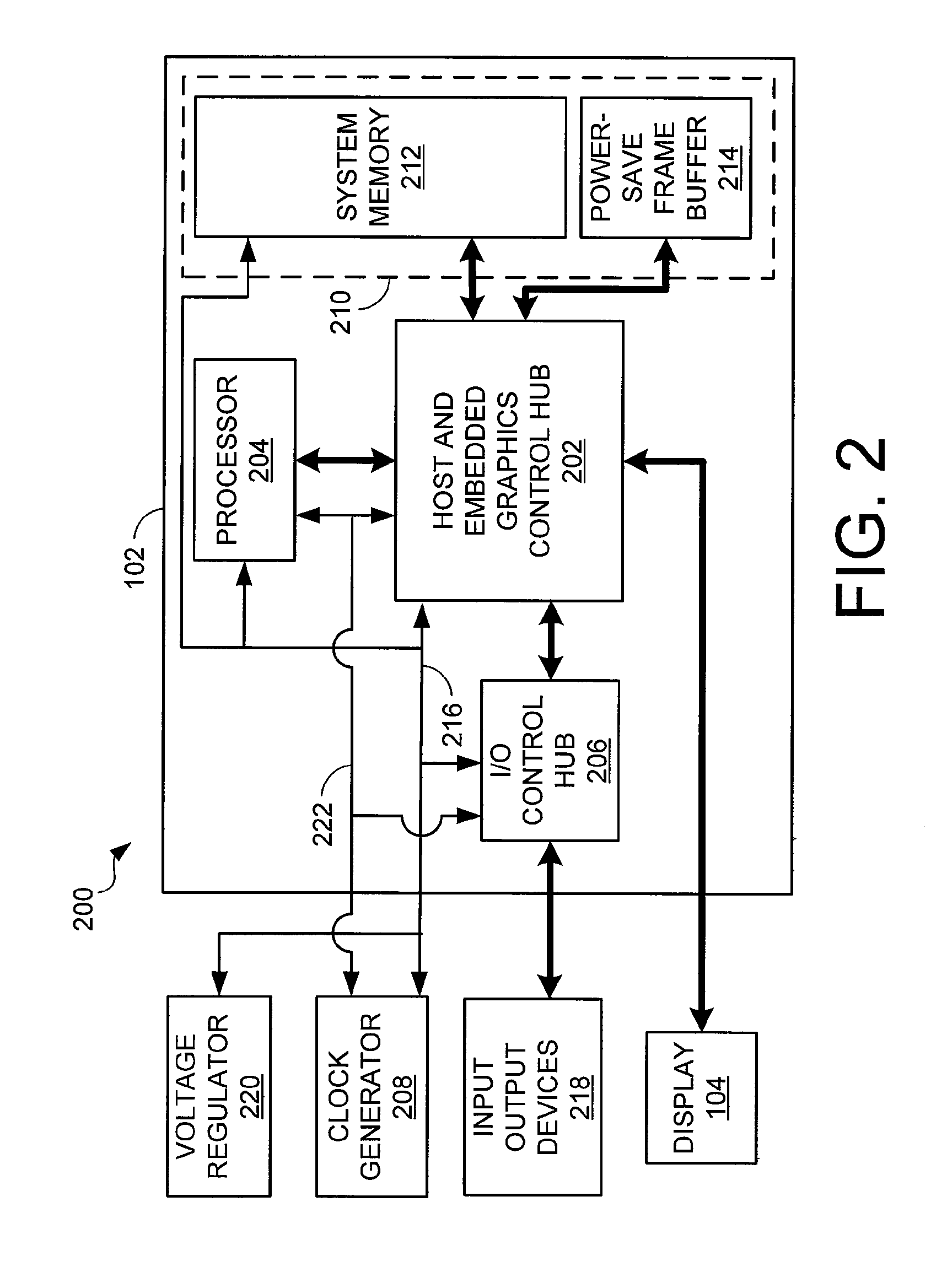Systems and Methods for Low-Power Computer Operation
a computer and low-power technology, applied in computing, instruments, electric digital data processing, etc., can solve the problems of computer configuration using a unified memory architecture (uma) suffering from additional power draining activity, graphics engine cannot be placed into a low-power state, and graphics related memory continues to consume power
- Summary
- Abstract
- Description
- Claims
- Application Information
AI Technical Summary
Problems solved by technology
Method used
Image
Examples
Embodiment Construction
[0025]Computer systems can be configured to perform power saving operations during periods of idle activity. For example, the power consumption of some system components, such as memory and processing circuitry (i.e. processors in the Intel® x86 processor family) can be reduced during these idle periods of time. For example, if the computer is being used for the display of several pages of a Microsoft® PowerPoint® presentation, there can be long periods of time between the display of each sequential of slide. Although the computer system is not idle when called upon to retrieve and display the next slide, the time between the initial display of each slide requires very little computing activity. During such an idle time, among other power-saving measures, the processing circuitry and other computer components may enter into and out of one of a number of power states (i.e. C0, C1, C2, etc.) and other activities which are generally transparent to the end user. However, the user transp...
PUM
 Login to View More
Login to View More Abstract
Description
Claims
Application Information
 Login to View More
Login to View More - R&D
- Intellectual Property
- Life Sciences
- Materials
- Tech Scout
- Unparalleled Data Quality
- Higher Quality Content
- 60% Fewer Hallucinations
Browse by: Latest US Patents, China's latest patents, Technical Efficacy Thesaurus, Application Domain, Technology Topic, Popular Technical Reports.
© 2025 PatSnap. All rights reserved.Legal|Privacy policy|Modern Slavery Act Transparency Statement|Sitemap|About US| Contact US: help@patsnap.com



